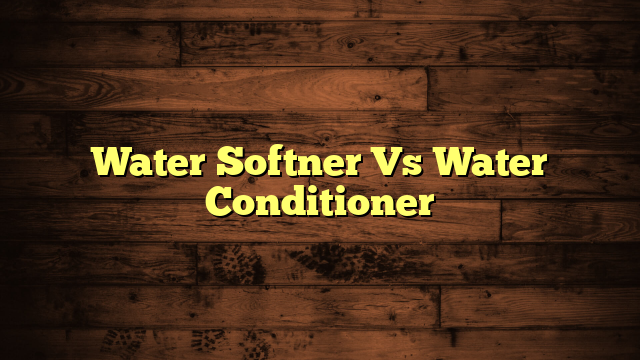Mastering Your Water Softener: Guide to Control and Settings
When it comes to mastering your water softener, understanding its controls and settings is essential for ideal performance. You might not realize how a few adjustments can greatly enhance your water quality and efficiency. From managing salt levels to scheduling regeneration cycles, each aspect plays a vital role in keeping your system running smoothly. But how do you determine the right settings for your specific needs? The answer lies in exploring the nuances of your water softener and its unique requirements. Let's uncover the key elements that can make all the difference.
Key Takeaways
- Adjust regeneration frequency based on water hardness and daily consumption to maintain optimal softening performance.
- Schedule regeneration during off-peak hours to ensure consistent water availability for household use.
- Regularly check salt levels in the brine tank and maintain at least half full to prevent system failure.
- Monitor water usage patterns to fine-tune regeneration settings and address hard water symptoms promptly.
- Conduct annual inspections of the resin tank and semi-annual cleaning of the brine tank for effective maintenance.
Understanding Hard Water
Hard water is a common issue that many households face, affecting about 85% of homes in the United States. This problem arises when your water quality includes high levels of minerals like calcium and magnesium.
You mightn't notice it right away, but these minerals can lead to significant mineral buildup over time, impacting appliances, plumbing, and even your skin and hair.
When you wash dishes or take a shower, hard water can leave spots on glassware and make soaps less effective. As you encounter this buildup, you may find yourself using more detergent than necessary, which can be frustrating.
Furthermore, mineral deposits can accumulate in pipes, potentially leading to costly repairs down the line.
Understanding hard water is vital for maintaining your home and ensuring that your appliances function properly. If you've noticed signs of hard water, like a chalky residue or reduced water flow, it's important to explore solutions.
You can enhance your overall water experience by addressing these issues, improving not just your plumbing but also your daily routines. So, take a closer look at your water quality — your home will thank you!
Types of Water Softeners
When it comes to choosing a water softener, you've got a few main options to evaluate.
Ion exchange softeners are the most common, but there are also salt-free systems and magnetic water conditioners that might suit your needs.
Each type comes with its own advantages, so let's explore what each one offers to help you make an informed decision.
Ion Exchange Softening
Ion exchange softening is one of the most effective methods for treating hard water, allowing you to enjoy cleaner, softer water throughout your home. This process works by exchanging hard minerals like calcium and magnesium with sodium ions. As water flows through the resin beads in the softener, these beads attract the hard minerals, effectively removing them from your water supply.
One of the primary ion exchange benefits is that it helps prevent scale buildup in your plumbing and appliances, extending their lifespan and improving efficiency.
Furthermore, softer water can enhance the effectiveness of soaps and detergents, making your cleaning tasks easier and more efficient. You'll likely notice that your skin feels softer after bathing, and your clothes come out cleaner and brighter.
Understanding the ion exchange process can empower you to make informed decisions about your water treatment system. With regular maintenance and salt replenishment, your water softener will continue to provide you with the benefits of softened water.
In no time, you'll appreciate the difference cleaner water makes in your daily life.
Salt-Free Systems
Salt-free systems offer a popular alternative for those looking to treat hard water without the use of traditional salt-based methods.
These systems utilize different technologies to reduce the effects of hardness in water, while providing several salt-free benefits. If you're considering a salt-free system, here's what to keep in mind:
- Eco-Friendly: Salt-free systems don't discharge brine, making them better for the environment.
- Low Maintenance: They generally require less maintenance since they don't need regular salt refills.
- Healthier Water: You won't have to worry about sodium levels in your water, making it a healthier choice for your family.
- System Comparisons: When comparing systems, remember that salt-free options often change the structure of minerals rather than removing them entirely.
While salt-free systems may not be as effective in completely softening water as traditional methods, they can still offer significant improvements.
Consider your specific needs and preferences when choosing the right system for you. Understanding these key aspects will help you make an informed decision and enjoy the benefits of treated water without the drawbacks of salt.
Magnetic Water Conditioners
Magnetic water conditioners provide another innovative option for addressing hard water issues. By utilizing magnetic technology, these devices aim to alter the properties of minerals present in hard water, helping to prevent scale buildup in your plumbing and appliances. While they don't remove minerals like traditional water softeners, many users find them effective for improving water quality and extending appliance life.
Here's a quick overview of magnetic water conditioners:
| Feature | Description |
|---|---|
| Technology Type | Uses magnetic fields to condition water |
| Maintenance | Minimal, typically no salt needed |
| Cost | Generally lower initial investment |
| Effectiveness | Varies by water hardness and setup |
When considering water treatment options, it's crucial to weigh the benefits and limitations of magnetic water conditioners. While some swear by their effectiveness, others may prefer conventional systems for guaranteed results. Ultimately, it's about finding what works best for your home. With the right choice, you'll enjoy the advantages of softened water without the hassle of salt or extensive maintenance.
Key Controls Overview
When you're setting up your water softener, understanding the key controls is crucial.
The control panel features allow you to customize your system, set the water hardness levels, and adjust the regeneration cycles to fit your needs.
Control Panel Features
The control panel of your water softener serves as the brain of the system, allowing you to customize settings and monitor performance.
Understanding its features can make a significant difference in managing your water quality. Here are the key control panel buttons you should familiarize yourself with:
- On/Off Switch: This button lets you power the system on or off, ensuring you can save energy when it's not in use.
- Regeneration Cycle Control: This feature allows you to set or initiate the regeneration process, which is essential for maintaining ideal function.
- Display Settings: Your control panel includes a digital display that shows essential information like the current water hardness level and the time until the next regeneration.
- Salt Level Indicator: This handy feature alerts you when it's time to add salt, ensuring your system works efficiently.
Setting Water Hardness Levels
Adjusting water hardness levels is essential for optimizing your water softener's performance. To get started, you'll need to determine the specific hardness of your water supply. You can often find this information through your local water utility or by using a water testing kit. The ideal settings for your water softener typically fall between 10 to 20 grains per gallon, depending on the hardness of your incoming water.
Once you have your water hardness measurement, access the control panel of your softener. Most models allow you to input the hardness level directly. Use the up and down arrows or the dial to set the correct value. Be certain to save your settings before exiting.
Keep in mind that setting the hardness level too high can lead to wasted salt and unnecessary costs, while setting it too low may not effectively soften the water.
Regularly check your water hardness and adjust as needed, especially if you notice changes in soap lather or scale buildup. By maintaining the ideal settings, you'll guarantee your water softener runs efficiently and prolong its lifespan, giving you soft water when you need it most.
Regeneration Cycle Adjustments
Once you've set the appropriate water hardness levels, it's time to focus on the regeneration cycle of your water softener.
The regeneration cycle is vital for maintaining peak performance, so you'll want to adjust it based on your household's water usage. Here are some key factors to take into account:
- Regeneration Frequency: Determine how often your softener needs to regenerate. This can depend on your water hardness and daily water consumption.
- Regeneration Timing: You can set the regeneration to occur during off-peak hours, like overnight, to guarantee you have soft water available during peak usage times.
- Manual vs. Automatic Regeneration: Decide whether you want your unit to regenerate automatically or if you prefer to initiate it manually based on your observations.
- Water Usage Patterns: Keep track of your water usage patterns to help fine-tune the regeneration settings.
For example, if you notice your water is still hard before the scheduled regeneration, you may need to adjust the frequency or timing.
Adjusting Salt Levels
Maintaining the right salt levels in your water softener is crucial for ideal performance. You should regularly check the salt in your brine tank to verify it's at optimal levels. This not only helps the softener function properly but also prolongs its lifespan.
There are various salt types available, including rock salt, solar salt, and evaporated salt. Each type has different purity levels and solubility rates, so choose what works best for your system.
Generally, you want to keep the salt level at least half full to prevent your system from running out. If you notice that your water isn't softening as it should, it might be time to adjust the salt levels. Keep in mind that using too much salt can lead to unnecessary waste and potential maintenance issues.
To determine the ideal levels for your specific unit, consult your manufacturer's guidelines, as different models may have unique requirements.
Regularly monitoring and adjusting salt levels is key to guaranteeing your water softener runs efficiently and effectively, providing you with the comfort of softened water.
Setting Regeneration Cycles
Setting regeneration cycles is essential for ensuring your water softener operates efficiently. By fine-tuning the regeneration timing and cycle frequency, you can optimize performance and extend the life of your system.
Here are four key factors to evaluate when setting your regeneration cycles:
- Water Usage: Assess your household's water consumption. Higher usage typically means more frequent regeneration cycles are necessary.
- Hardness Level: Determine the hardness of your water. If it's particularly hard, you might need to adjust your regeneration timing to compensate.
- Tank Size: The size of your water softener tank influences how often it should regenerate. Larger tanks can often go longer between cycles.
- Time of Day: Many people prefer to schedule regeneration during off-peak hours, such as overnight. This way, you won't experience interruptions during peak water usage times.
Maintenance Tips
Regular maintenance is vital for keeping your water softener in top shape and guaranteeing its longevity. By performing routine checks, you can prevent issues before they arise and save money on repairs. Here are some key maintenance tips you should follow:
| Maintenance Task | Frequency |
|---|---|
| Check Salt Levels | Monthly |
| Inspect the Resin Tank | Annually |
| Clean the Brine Tank | Every 6 months |
First, check your salt levels monthly to guarantee peak performance. If the salt is running low, replenish it to keep your system running smoothly. Next, inspect the resin tank annually for any signs of wear or damage. This tank is essential for softening the water, and any issues here can affect your water quality. Finally, cleaning the brine tank every six months will help prevent clogs and guarantee that your water softener operates efficiently.
Troubleshooting Common Issues
Even with proper maintenance, you might encounter some common issues with your water softener. Recognizing these common symptoms early on can save you time and frustration.
Here are some troubleshooting steps you can take:
- Hard Water Symptoms: If you notice scale buildup on faucets or a soapy feeling while showering, your softener mightn't be functioning properly. Check the salt level and recharge settings.
- Low Water Pressure: If your water flow seems sluggish, it could be due to a clogged resin bed. Inspect the system for blockages or consider a backwash to clear any buildup.
- Salt Bridges: Sometimes, salt can form a hard crust in the brine tank, preventing it from dissolving. If you notice a solid mass, break it up gently and refill with salt.
- Leaking Water: If you see water pooling around your softener, check the connections and seals for leaks. Tightening fittings or replacing worn seals might solve the issue.
Frequently Asked Questions
How Do I Know if My Water Softener Is Working Properly?
To know if your water softener's working properly, perform water testing regularly. Look for performance indicators like reduced hardness, fewer mineral deposits on fixtures, and softer laundry. If you notice issues, consider troubleshooting or maintenance.
Can Hard Water Damage My Plumbing Over Time?
When it comes to hard water effects, you're playing with fire if you ignore it. Over time, hard water can cause scale buildup, leading to costly plumbing maintenance. Regular checks can save you a headache later.
What Are the Signs of Low Salt Levels?
You'll notice signs of low salt levels when the salt indicator lights up, and your water feels hard. Regularly checking and refilling salt can prevent issues; these maintenance tips keep your system running smoothly.
Is It Safe to Drink Softened Water?
When it comes to sipping softened water, you're in luck! Generally, it's safe, but keep drinking guidelines in mind, especially if you're on a sodium-restricted diet. Enjoy, but always stay informed about softened water safety!
How Often Should I Replace My Water Softener?
You should replace your water softener every 10 to 15 years, depending on its lifespan. Watch for replacement indicators like reduced efficiency or increasing maintenance needs to know when it's time for a new unit.
Conclusion
By mastering your water softener, you can greatly improve your home's water quality and efficiency. Did you know that a well-maintained system can reduce soap usage by up to 50%? With a few simple adjustments to settings, regular maintenance checks, and timely regeneration cycles, you'll not only extend your softener's lifespan but also enjoy the benefits of softer water. Stay proactive, and your water softener will keep your home running smoothly for years to come.







